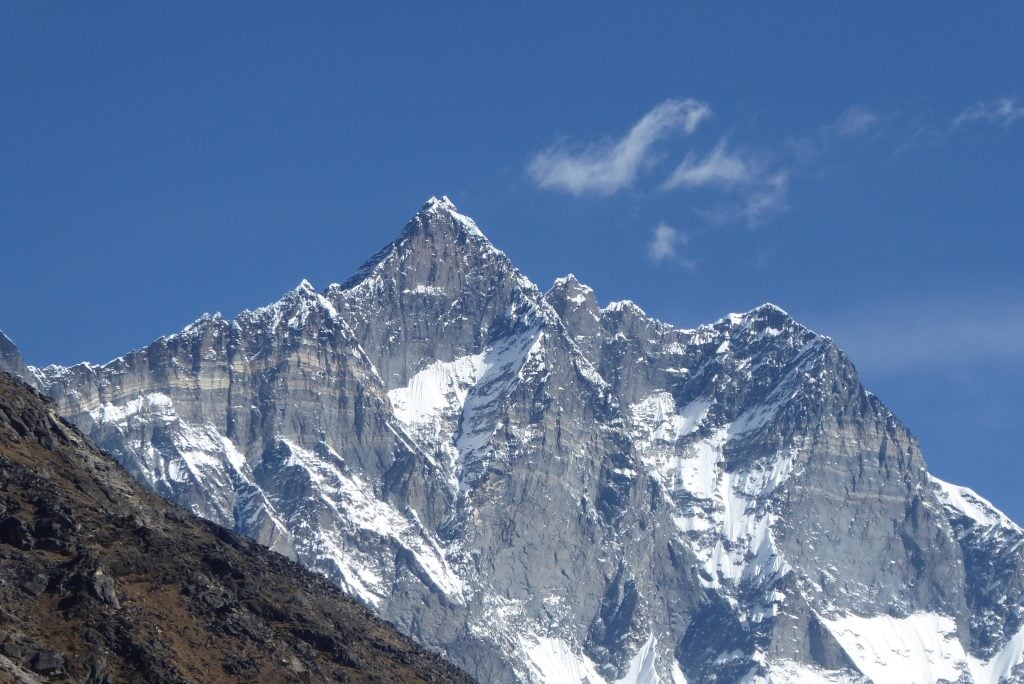The Highest Mountains in China
China, a vast and diverse nation, boasts an impressive array of mountain ranges that contribute to the country’s breathtaking landscapes. From the towering peaks of the Himalayas to the sacred summits of Tibet, China’s mountains are not only a testament to its geographical richness but also play a significant role in shaping its cultural and spiritual identity. The diverse topography offers a captivating journey for adventurers and nature enthusiasts, providing a unique blend of natural wonders and historical significance. In this exploration, we delve into the highest mountains that grace the Chinese landscape, each telling a story of grandeur, reverence, and the harmonious interplay between nature and civilization. The Highest Mountains in China :
Mount Everest: The Crown Jewel of the Himalayas in Tibet
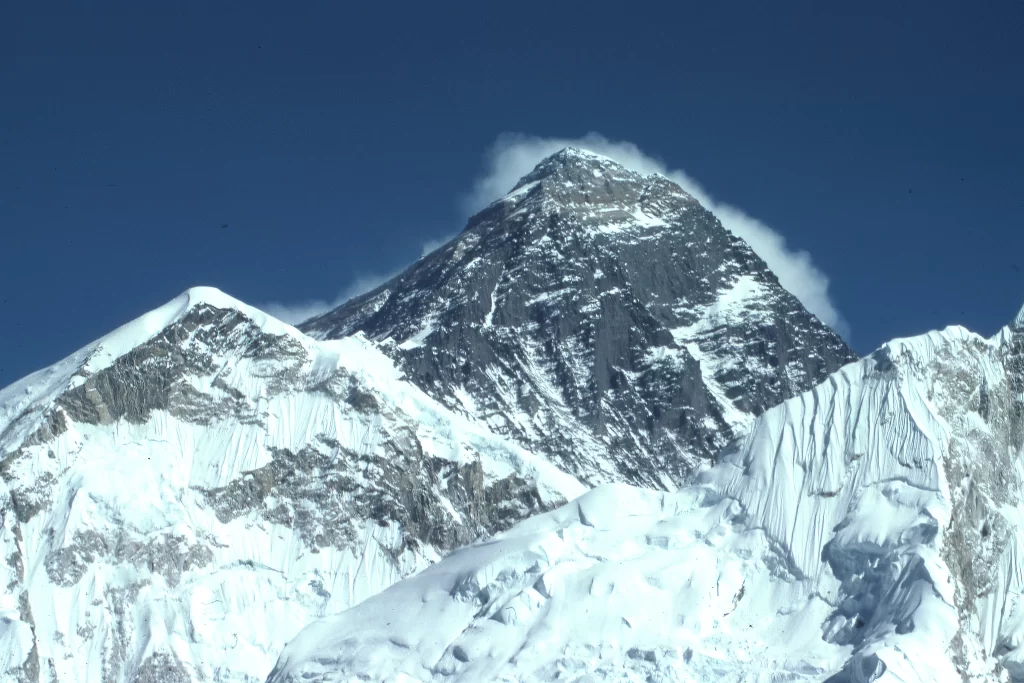
Mount Kailash: Sacred in Tibet’s Himalayas
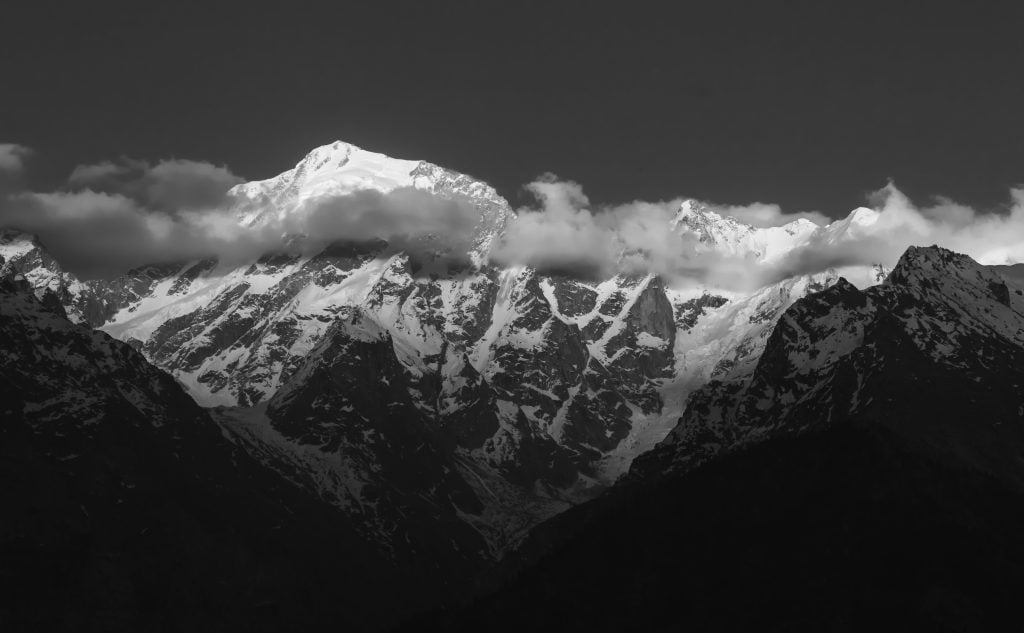
Gang Rinpoche: The Surrounding Peaks of Mount Kailash
Minya Konka: The “King of Sichuan” in the Eastern Himalayas
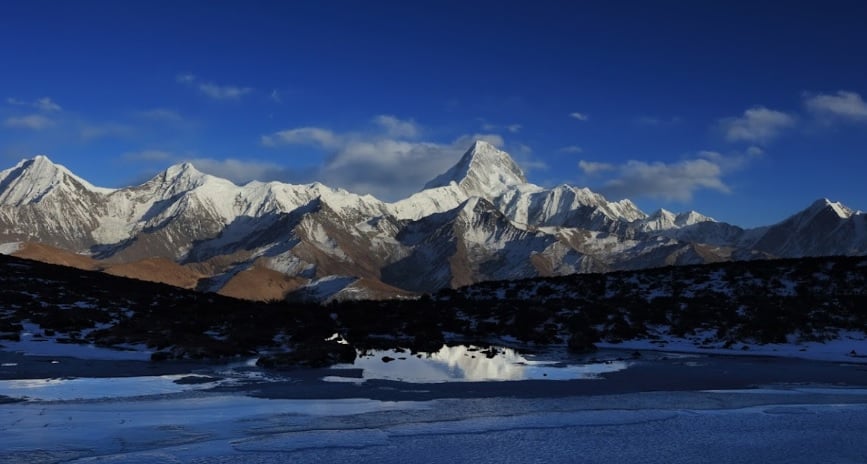
Mount Jade: The Roof of Taiwan
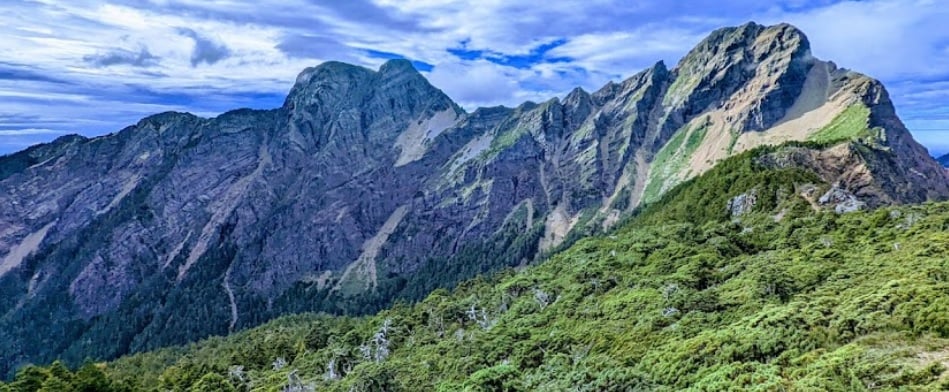
Meili Snow Mountain: Yunnan’s Grandeur

What is the second highest mountain in the world?
The third highest mountain in the world is Kangchenjunga. It is located in the Himalayas, on the border between India and Nepal. Kangchenjunga has a peak elevation of 8,586 meters (27,966 feet), making it the third-tallest mountain after Mount Everest and K2.
What is the tallest mountain in the world?
The tallest mountain in the world, measured by its elevation above sea level, is Mount Everest. It stands at an impressive 29,029 feet (8,848 meters) in the Himalayas on the border of Nepal and China.
What Are the Sacred Mountains of China?
What is the highest mountain in China ?
If you consider mountains that are part of the border between China and other countries, then the highest mountain in China is Mount Everest, which rises 8,848.86 meters (29,031.7 ft) above sea level. However, the summit is located on the border of China and Nepal.
What is the Nalati Grassland?
Nalati Grassland is a picturesque plateau located in the Xinjiang Uygur Autonomous Region of China. Positioned in the southern part of the Tianshan Mountains, it sits at an elevation of about 2,000 meters (6,600 feet) above sea level.
The grassland is renowned for its expansive, verdant meadows that are particularly stunning during the summer months when wildflowers bloom and the landscape is lush and green. The area is traditionally used by Kazak herders for grazing livestock and reflects a traditional nomadic lifestyle.
Nalati Grassland is a popular destination for tourists due to its natural beauty and cultural experiences. Visitors can engage in activities such as horseback riding, hiking, and photography. The region also offers a glimpse into Kazak culture, including traditional foods, music, and dance. Its scenic views and tranquil environment make it a favored spot for those seeking both natural and cultural enrichment.
You Will Be Dazzled by the Fascinating View of the Chinese Mountains!
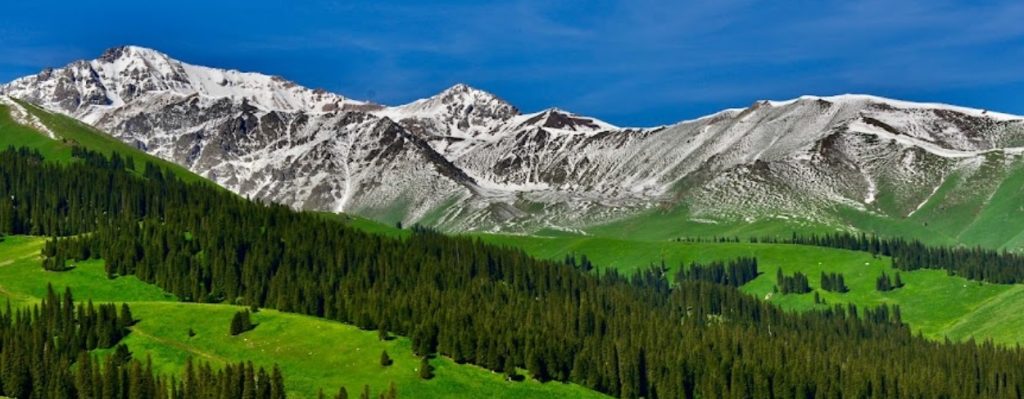
The tallest mountain in China is Mount Everest, known in China as Mount Qomolangma. It stands at a staggering 8,848.86 meters (29,031.7 feet) above sea level. Mount Everest straddles the border between China and Nepal.
Tallest mountain in the world
What mountains are in China?
| Mountain | Province-level division | Elevation |
| Amne Machin | Qinghai | 6,282 metres (20,610 ft) |
| Paektu Mountain | Jilin | 2,744 metres (9,003 ft) |
| Baishi Mountain | Hebei | 2,096 metres (6,877 ft) |
| Bogda Peak | Xinjiang | 5,445 metres (17,864 ft) |
| Broad Peak | Xinjiang | 8,051 metres (26,414 ft) |
| Bukadaban Feng | Qinghai/Xinjiang | 6,860 metres (22,507 ft) |
| Chakragil | Xinjiang | 6,760 metres (22,178 ft) |
| Changla | Tibet | 6,721 metres (22,051 ft) |
| Chomo Lonzo | Tibet | 7,804 metres (25,604 ft) |
| Chongtar Kangri | Xinjiang | 7,315 metres (23,999 ft) |
| Daxue Mountain | Yunnan | 3,500 metres (11,483 ft) |
| Dunheger | Xinjiang | 3,325 metres (10,909 ft) |
| Mount Emei | Sichuan | 3,099 metres (10,167 ft) |
| Mount Everest | Tibet | 8,848 metres (29,029 ft)[4] |
| Geladaindong Peak | Qinghai | 6,621 metres (21,722 ft) |
| Mount Genyen | Sichuan | 6,204 metres (20,354 ft) |
| Mount Gongga | Sichuan | 7,556 metres (24,790 ft) |
| Gora Alagordy | Xinjiang | 4,622 metres (15,164 ft) |
| Haba Xueshan | Yunnan | 5,396 metres (17,703 ft) |
| Mount Heng (Shanxi) | Shanxi | 2,017 metres (6,617 ft) |
| Mount Hua | Shaanxi | 2,160 metres (7,087 ft) |
| Huangyajian Peak | Zhejiang | 1,921 metres (6,302 ft) |
| Khüiten Peak | Xinjiang | 4,374 metres (14,350 ft) |
| Hunhua Shan | Yunnan | 3,420 metres (11,220 ft) |
| Jade Dragon Snow Mountain | Yunnan | 5,596 metres (18,360 ft) |
| Jengish Chokusu | Xinjiang | 7,439 metres (24,406 ft) |
| Mount Jizu | Yunnan | 3,240 metres (10,630 ft) |
| Jongsong Peak | Tibet | 7,462 metres (24,482 ft) |
| K2 | Xinjiang | 8,611 metres (28,251 ft) |
| Mount Kailash | Tibet | 6,638 metres (21,778 ft) |
| Kangpenqing | Tibet | 7,281 metres (23,888 ft) |
| Kangto | Tibet/India | 7,060 metres (23,163 ft) |
| Kawagarbo | Yunnan | 6,740 metres (22,113 ft) |
| Kezhen Peak | Xinjiang | 7,038 metres (23,091 ft) |
| Khartaphu | Tibet | 7,213 metres (23,665 ft) |
| Khumbutse | Tibet | 6,636 metres (21,772 ft) |
| Kitten Mountain | Guangxi | 2,142 metres (7,028 ft) |
| Kongur Tagh | Xinjiang | 7,649 metres (25,095 ft) |
| Kubi Gangri | Tibet | 6,859 metres (22,503 ft) |
| Labuche Kang | Tibet | 7,367 metres (24,170 ft) |
| Langtang Ri | Tibet | 7,205 metres (23,638 ft) |
| Laojun Mountain | Yunnan | 4,513 metres (14,806 ft) |
| Mount Lao | Shandong | 1,138 metres (3,734 ft) |
| Lhotse | Tibet | 8,516 metres (27,940 ft) |
| Lingtren | Tibet | 6,749 metres (22,142 ft) |
| Liushi Shan | Tibet/Xinjiang | 7,167 metres (23,514 ft) |
| Lunpo Gangri | Tibet | 7,095 metres (23,278 ft) |
| Huangshan | Anhui | 1,864 metres (6,115 ft) |
| Makalu | Tibet | 8,481 metres (27,825 ft) |
| Mazong Mountain | Gansu | 2,584 metres (8,478 ft) |
| Mianzimu | Yunnan | 6,054 metres (19,862 ft) |
| Mount Jinfo | Chongqing | 2,238 metres (7,343 ft) |
| Mount Longmen (Shanxi) | Shanxi | 1,087 metres (3,566 ft) |
| Mount Mian | Shanxi | 2,440 metres (8,005 ft) |
| Muztagh Ata | Xinjiang | 7,546 metres (24,757 ft) |
| Nairamdal Peak | Xinjiang | 4,180 metres (13,714 ft) |
| Nyegyi Kansang | Tibet | 7,060 metres (23,163 ft) |
| Phu Si Lung | Yunnan | 3,076 metres (10,092 ft) |
| Mount Pomiu | Sichuan | 5,413 metres (17,759 ft) |
| Porong Ri | Tibet | 7,292 metres (23,924 ft) |
| Pumori | Tibet | 7,161 metres (23,494 ft) |
| Sauyr Zhotasy | Xinjiang | 3,840 metres (12,598 ft) |
| Shiceng Dashan | Yunnan | 1,830 metres (6,004 ft) |
| Shiren Mountain | Henan | 2,153 metres (7,064 ft) |
| Siguang Ri | Tibet | 7,308 metres (23,976 ft) |
| Shishapangma | Tibet | 8,013 metres (26,289 ft) |
| Skyang Kangri | Xinjiang | 7,545 metres (24,754 ft) |
| Mount Song | Henan | 1,500 metres (4,921 ft) |
| Mount Taibai | Shaanxi | 3,767 metres (12,359 ft) |
| Mount Tai | Shandong | 1,533 metres (5,030 ft) |
| Tavan Bogd | Xinjiang | 4,374 metres (14,350 ft) |
| Teram Kangri | Xinjiang | 7,462 metres (24,482 ft) |
| The Crown (mountain) | Xinjiang | 7,295 metres (23,934 ft) |
| Tianmu Mountain | Zhejiang | 1,506 metres (4,941 ft) |
| Mount Tiantai | Zhejiang | 1,138 metres (3,734 ft) |
| Tiantangzhai | Anhui/Hubei | 1,729 metres (5,673 ft) |
| Mount Tianzhu | Anhui | 1,760 metres (5,774 ft) |
| Tomort | Xinjiang | 4,886 metres (16,030 ft) |
| Wugai Mountain | Hunan | 1,600 metres (5,249 ft) |
| Mount Wutai | Shanxi | 3,058 metres (10,033 ft) |
| Wuzhi Mountain | Hainan | 1,840 metres (6,037 ft) |
| Xiao Mountain | Henan | 1,903 metres (6,243 ft) |
| Mount Siguniang | Sichuan | 6,250 metres (20,505 ft) |
| Mount Xuebaoding | Sichuan | 5,588 metres (18,333 ft) |
| Xuelian Feng | Xinjiang | 6,627 metres (21,742 ft) |
| Xueshan | Taiwan | 3,886 metres (12,749 ft) |
| Yangmolong | 6,060 metres (19,882 ft) | |
| Yu Shan | Taiwan | 3,952 metres (12,966 ft) |
| Yuelu Mountain | Hunan | 300 metres (984 ft) |
| Yun Mountain | Hunan | 1,372 metres (4,501 ft) |
| Yuntai Mountain (Henan) | Henan | 1,308 metres (4,291 ft) |
| Yuzhu Peak | Qinghai | 6,224 metres (20,420 ft) |
| Changbai Mountains | Heilongjiang | 2,000 metres (6,562 ft) |
| Mount Tian | Xinjiang | 7,439 metres (24,406 ft) |
| Mountain Lu | Jiangxi | 1,474 metres (4,836 ft) |
Paektu Mountain: The Sacred Peak of the Korean Peninsula
Chomo Lonzo : Interesting Facts about
Kangpenqing Mountain : Interesting Facts about
Mount Xuebaoding: The Snowy Treasure Peak
Kezhen Peak (Karpogo Sar)
Kezhen Peak was first ascended in 1956 by a Japanese mountaineering expedition. The route to the summit is via the northwest ridge and is considered to be quite difficult. The mountain is home to numerous glaciers and avalanches.
Kezhen Peak is a popular destination for experienced mountaineers. The summit offers breathtaking views of the Karakoram mountain range.
Khartaphu Mountain
Haba Xueshan Mountain: A Majestic Peak in Yunnan
Mount Gongga: Majesty of the Snow-Capped Peaks
Chongtar Kangri Mountain
Teram Kangri: A Karakoram Peak
Mount Lunpo Gangri
Lunpo Gangri, also known as Loinbo Kangri, is a mountain in the Gangdise Range of the Himalayas. It is the highest peak in the Gangdise Range, with an elevation of 7,095 meters (23,274 ft), and the second highest peak in the Tibet Autonomous Region. Lunpo Gangri is a holy mountain for both Buddhists and Hindus. For Buddhists, the mountain is considered the center of the White Lotus Mountain, a sacred region believed to be the abode of Avalokitesvara (the Buddha of Compassion). For Hindus, the mountain is considered an extension of Mount Kailash, which is believed to be the home of the god Shiva.Lunpo Gangri is a difficult mountain to climb. The first ascent was made in 1936 by a Japanese mountaineering team. Since then, only a few hundred people have reached the summit.
Geladaindong Peak: A Majestic Himalayan Summit
Mount Khumbutse: The Giant in the Shadow of Everest
Jongsong Peak: A remote and challenging mountain in the Himalayas
Jongsong Peak is a mountain in the Himalayas located in Nepal. At 7,462 meters (24,482 ft) it is the 57th highest mountain in the world, and is the tripoint of India, Nepal, and China. It was first climbed in 1930 by a German expedition led by Gunther Dyhrenfurth.Jongsong Peak is a difficult and less attempted peak due to its remote location and the technical difficulty of the climb. The mountain is located in the Kanchenjunga Himal, a sub-range of the Himalayas that is home to some of the world’s highest mountains. The approach to Jongsong Peak is long and arduous, and the climb itself is technically challenging. The mountain has a steep north face and a long, glaciated south face.The first ascent of Jongsong Peak was made in 1930 by a German expedition led by Gunther Dyhrenfurth. The team climbed the mountain via the south face. Since then, there have been only a handful of ascents of Jongsong Peak.
Kongur Tagh: The Crown of Central Asia
Kongur Tagh is the highest mountain in Central Asia, with an elevation of 7,719 meters. Located on the border of Tajikistan and China, it is a prominent peak known for its breathtaking views and challenging climbing routes, attracting mountaineers and adventure seekers. The mountain was first summited in 1931 by a German expedition led by Wilhelm Rickmers. Kongur Tagh, which means “black mountain” in the Tajik language, has a mysterious atmosphere and is surrounded by glaciers and lakes that add a magical touch to its surroundings.
Langtang Ri: A Trekker’s Paradise
Jengish Chokusu Peak: A Kyrgyz Giant
Xuelian Feng Peak: A Challenging Ascent in the Tian Shan
Muztagh Ata : Father of Ice Mountains
Muztagh Ata is the highest peak in the Pamir Mountains, and the 47th highest mountain in the world. Located in the Xinjiang Uyghur Autonomous Region of China, it is very close to the border with Tajikistan. The name Muztagh Ata means “father of ice mountains”, and it gets this name from its snowy peak and imposing appearance.The mountain was first summited in 1956 by a Soviet mountaineering team. Since then, Muztagh Ata has become a popular climbing destination for experienced mountaineers. The climb is quite dangerous due to the difficult route and high altitude.Muztagh Ata is an area that offers stunning scenery. At the foot of the mountain, there are lush valleys and glaciers. From the summit, it is possible to see panoramic views of the Pamir Mountains.
Amne Machin Mountain: A Hidden Gem of the Himalayas
Amne Machin Mountain is a peak located in the Gangdise Mountains of the Himalayas, in Tibet, China. It has an elevation of 6,288 meters (20,627 feet) and is the 58th highest mountain in the world. The mountain was first climbed in 1957 by a British expedition led by Tom Bourdillon and Charles Evans. Amne Machin is a difficult and dangerous mountain to climb, due to its high altitude, avalanche risk, cold temperatures, and lack of oxygen. Despite these challenges, Amne Machin is a popular destination for mountaineers.
Mount Tian: The Heavenly Mountain
Located in the heart of the Tien Shan mountain range, Mount Tian is the second-highest mountain in China, reaching a height of 6,093 meters. Considered sacred by Taoism, Buddhism, and Islam, this mountain is a UNESCO World Heritage Site.Numerous Taoist temples and monasteries dot the landscape, adding to the mountain’s spiritual atmosphere. Its snow-capped peaks, glaciers, alpine meadows, and pristine forests offer breathtaking natural beauty, making it a haven for nature lovers and adventure seekers.
Mount Siguniang
Siguniang Mountain, also known as the “Mountain of the Four Maidens”, is a 6,250-meter-high mountain located in Sichuan Province, China. It is famous for its breathtaking scenery, including snow-capped peaks, glaciers, lush valleys, and clear lakes. The mountain is home to a variety of plant and animal life, including giant pandas, golden monkeys, and snow leopards. Siguniang Mountain is a UNESCO World Heritage Site and is one of China’s most important natural attractions.
Xueshan Mountain
Xueshan Mountain, located in northeastern Taiwan and standing at an impressive 3,886 meters, ranks as the island’s second-highest peak, revered as sacred by the Atayal indigenous people with traditional rituals and cultural significance. Renowned for its rich biodiversity, the mountain hosts diverse flora and fauna, including endemic species. Beyond its cultural and ecological significance, Xueshan is a popular destination for outdoor enthusiasts, offering opportunities for mountaineering and hiking amidst the stunning landscapes of Shei-Pa National Park where it resides.
Yuzhu Peak
Yuzhu Peak is a prominent mountain summit located in Qinghai province, China. Situated in the northwest of the Tibetan Plateau, it forms a part of the Kunlun Mountains. With an elevation of approximately 6,178 meters, it stands as one of the highest points in the region. Renowned for its breathtaking scenery and natural beauty, it serves as a popular climbing destination for mountaineers. Yuzhu Peak is also recognized as an important area for conservation efforts, preserving its rich ecosystem and biodiversity. It remains a captivating attraction for nature enthusiasts and adventure seekers alike.
Mount Genyen
Mount Genyen, an impressive peak rising in the western part of Tibet, stands as one of the prominent mountains in the region with an elevation of approximately 6,204 meters (20,354 feet). Notable for both its natural beauty and religious significance, this mountain holds a revered place in Tibetan Buddhism and local beliefs. Revered as a sacred site in Tibetan culture, Mount Genyen is adorned with temples and monasteries dotting its foothills, serving as religious centers. Climbing expeditions to the summit offer climbers not only a physical challenge but also a spiritual journey as they navigate through the mountain’s terrain in harmony with nature’s forces
Chakragil Mountain
Chakragil Mountain, located in China’s Xinjiang Uyghur Autonomous Region, is a formidable peak in the Pamir Mountains, rising to 6,760 meters (22,180 feet). First ascended in 1956, its challenging routes and unpredictable weather make it a mountaineering destination only for the experienced. The surrounding valley, however, offers a rich diversity of flora and fauna, attracting nature enthusiasts seeking a unique wilderness experience.
The Crown Mountain
The Crown is a remote and challenging 6,714-meter (22,028-foot) peak located in the Yengisogat subrange of the Karakoram Mountains. First ascended in 1997 by a Japanese mountaineering team, it has only been ascended a few times due to its difficult climbing routes and the political sensitivity of the region. Location: Yengisogat subrange, Karakoram Mountains, Xinjiang Uyghur Autonomous Region, China
Bogda Peak: A Majestic Peak of the Tianshan Mountains
Bogda Peak, towering at an altitude of 5,445 meters, is one of the most prominent peaks of the Tianshan Mountains. Nestled in the Eastern Tianshan range, it lies within the Xinjiang Uyghur Autonomous Region of China, approximately 60 kilometers east of the city of Urumqi. The peak is renowned for its breathtaking views, diverse flora and fauna, and significant historical importance as a sacred mountain. Bogda Peak serves as a popular destination for mountaineers and nature enthusiasts, attracting a multitude of visitors each year.
Kubi Gangri: The Giant Peak of the Himalayas
Kubi Gangri is a majestic mountain located in the Mahalangur Himal sub-range of the Himalayas. Standing at an elevation of 6,859 meters above sea level, it ranks as the 55th highest mountain in the world. The peak forms the international border between Nepal and Tibet (China), making it a popular destination for climbers from both countries. Kubi Gangri is situated at the western end of the Mahalangur Himal, roughly 200 kilometers from Mount Everest. The northern and southern slopes of the mountain are extremely steep and covered in glaciers. The eastern and western slopes are relatively gentler and feature meadows. The summit of Kubi Gangri is covered in snow and ice year-round. The first ascent of Kubi Gangri was made in 1955 by a Japanese mountaineering expedition. Since then, the mountain has been climbed via various routes. The most popular routes are the South Route from Nepal and the North Route from Tibet.
Bukadaban Feng Mountain: China’s Peak
Bukadaban Feng is a majestic mountain in western China, part of the Kunlun Mountains. At 22,507 feet (6,860 meters) high, it is the highest point in the Qinghai Province and is located northeast of the Hoh Xil Plateau.
Covered in glaciers and snow, Bukadaban Feng is a popular destination for climbers and nature lovers. Climbing to the summit is a challenging endeavor and is only recommended for experienced mountaineers. However, those who reach the top are rewarded with breathtaking views and panoramic vistas of the Tibetan Plateau.
Bukadaban Feng is also an important scientific area. The mountain’s glaciers and geology are studied by researchers to learn about the region’s climate history. Additionally, the diverse plant and animal life found on the mountain make it an important resource for biodiversity research.
Bukadaban Feng is one of China’s most significant mountains due to its natural beauty and scientific importance. Whether climbing to the summit or simply enjoying the views, Bukadaban Feng offers an unforgettable experience.
Baishi Mountain: Breathtaking Scenery and Thrilling Glass Walks
Baishi Mountain, located in Laiyuan County, Baoding Prefecture, Hebei Province, China, is a mountain renowned for its breathtaking scenery and thrilling glass walkways. Its highest peak, Foguangding, stands at an elevation of 2,096 meters (6,877 ft), and its main ridge stretches for over 7,000 meters (22,966 ft).
Baishi Mountain, also known as “White Stone Mountain,” derives its name from the abundance of white marble in the area. The mountain is home to diverse landscapes, featuring rugged terrain, scattered slopes, secluded and deep valleys, and lush forests. This diversity makes Baishi Mountain a popular destination for nature lovers and adventure seekers alike.
Highlights of the Mountain:
- Glass Walks: Baishi Mountain is famous for its glass skywalk, built in 2014, which extends 95 meters (312 ft) over a ravine at an elevation of 1,900 meters (6,200 ft). This skywalk is considered China’s longest, widest, and highest, offering visitors breathtaking views.
Changla Pass: A high mountain pass in the Himalayas
Chang La is a high mountain pass in the Ladakh Range of the Himalayas, located at an elevation of 5,360 metres (17,592 ft) above sea level. It is the second highest motorable pass in the world, after Khardung La, and is open only during the summer months from June to October. The pass is located on the Leh-Karu-Sakti-Zingral-Chang La-Durbuk-Tangtse-Pangong Lake road, and is the main gateway to the Changthang Plateau.
Mount Emei: A Sacred Landmark in China
Kawagarbo Mountain: A Sacred Peak in Yunnan, China
Kawagarbo Mountain, located in Yunnan, China, stands as a sacred peak with profound cultural and spiritual significance, particularly in Tibetan Buddhism. Also known as Meili Xue Shan, it holds a mystical allure, drawing pilgrims and adventurers alike. Rising to an impressive height of 6,740 meters (22,110 feet), the mountain’s summit is revered by locals and serves as a focal point for spiritual journeys along the Kawa Karpo Kora route. Renowned for its natural beauty and rugged landscapes, Kawagarbo entices climbers and nature enthusiasts seeking both physical challenges and spiritual enlightenment amidst its awe-inspiring vistas.
Jade Dragon Snow Mountain (Yulong Mountain)
Jade Dragon Snow Mountain (Yulong Mountain) is located north of Lijiang city in Yunnan Province, China, and is part of the southeastern extension of the Himalayas. Standing at 5,596 meters, it is the highest peak in Yunnan. The mountain range consists of 13 peaks, offering a majestic landscape over Lijiang. Known for its snow-covered summits and glaciers, Yulong Mountain is also considered a sacred mountain by the Naxi people. It is of great touristic significance due to its natural beauty, biodiversity, and cultural heritage, and it is located near the UNESCO World Heritage Site of the Old Town of Lijiang.
Mount Taibai
Mount Taibai, located in Shaanxi Province, China, is the highest peak in the Qin Mountains, reaching an elevation of 3,767 meters. Named after the mythological deity Taibai Jinsheng, the mountain is renowned for its stunning natural scenery and rich biodiversity. Its high altitude and snow-capped peaks contribute to a unique ecosystem that attracts nature enthusiasts and researchers alike. The area around Mount Taibai also features numerous historical and cultural sites, making it a significant destination for both nature lovers and history buffs. As a popular spot for mountaineering and hiking, Taibai Mountain stands out as one of China’s natural marvels.
10 Fascinating Facts About China’s Mountains
- Mount Everest: The World’s Highest Peak: Mount Everest, known as “Qomolangma” in Tibetan, is the highest mountain in the world, standing at 8,848.86 meters (29,031.7 feet). The mountain sits on the border between Nepal and the Tibet Autonomous Region of China.
- Huangshan’s Unique Granite Peaks: Huangshan, or the Yellow Mountains, in eastern China is famous for its uniquely shaped granite peaks, ancient pine trees, and “sea of clouds.” The mountain range is a UNESCO World Heritage Site and has inspired countless Chinese paintings and poems.
- Mount Tai’s Spiritual Significance: Mount Tai (Taishan) in Shandong Province is one of China’s Five Great Mountains and has been a place of worship for over 3,000 years. It is considered the most sacred of the Five Great Mountains and has been the site of numerous imperial ceremonies throughout Chinese history.
- Zhangjiajie’s Pillar-like Mountains: Zhangjiajie National Forest Park in Hunan Province is known for its towering pillar-like mountains. These unique formations inspired the floating mountains in the movie “Avatar.” The park is also a UNESCO Global Geopark.
- Mount Emei’s Giant Buddha: Mount Emei in Sichuan Province is one of China’s Four Sacred Buddhist Mountains. It is home to the Leshan Giant Buddha, a 71-meter (233-foot) tall stone statue carved out of a cliff face, which is the largest stone Buddha in the world.
- Mount Wutai’s Buddhist Heritage: Mount Wutai in Shanxi Province is another of China’s Four Sacred Buddhist Mountains. It has been a major center of Chinese Buddhism for over a millennium and is home to more than 40 temples, including the Xiantong Temple, one of China’s oldest wooden structures.
- The Karst Mountains of Guilin: The karst mountains of Guilin, located in Guangxi Province, are famous for their dramatic limestone peaks and are a symbol of China’s natural beauty. The landscape is so iconic that it appears on the back of the 20 yuan banknote.
- Mount Hua’s Treacherous Trails: Mount Hua in Shaanxi Province is known for its perilous hiking trails, including the famous “Plank Walk in the Sky,” a narrow path along a vertical cliff. Despite the dangers, it remains a popular destination for thrill-seekers.
- Changbai Mountain’s Heavenly Lake: Changbai Mountain, located on the border between China and North Korea, is an active volcano with a stunning crater lake called Tianchi, or “Heavenly Lake.” The lake is one of the deepest in the world and is surrounded by snow-capped peaks.
- Mount Everest’s Tibetan Plateau: The Tibetan Plateau, known as the “Roof of the World,” is the highest and largest plateau in the world, with an average elevation of over 4,500 meters (14,764 feet). It is home to several of the world’s highest mountains, including Mount Everest. The plateau plays a crucial role in the Earth’s climate system, influencing weather patterns across Asia.

